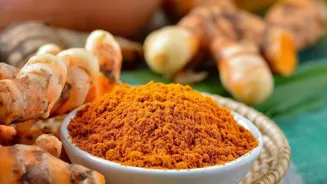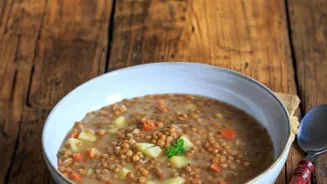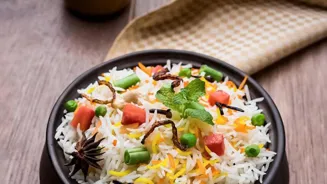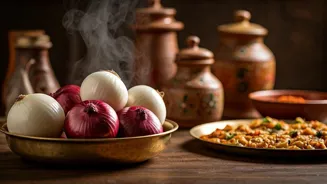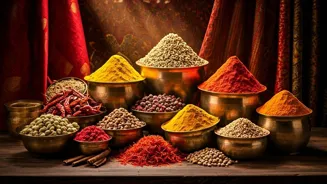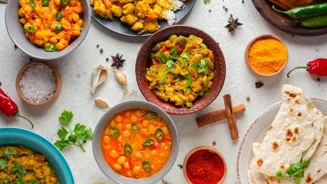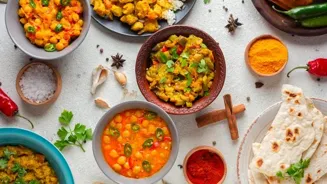Unveiling the Secrets of Authentic Indian Cooking! Dive into 7 Essential Techniques for Flavorful Delights!
Namaste, food lovers! Ever wondered what makes Indian food so irresistibly delicious and diverse?
It's not just the spices, though they play a huge role! It's also about mastering the cooking techniques that unlock the true potential of those spices and ingredients.
Forget complicated recipes for a moment; let's talk about the foundational skills that will elevate your Indian cooking from 'okay' to 'wah, kya baat hai!' We will discuss the seven essential cooking methodologies that form the base of the best-loved Indian dishes prepared at homes across India.
Prepare to immerse yourself in a world of flavour, aroma, and culinary expertise.
Tempering in Indian cooking: a burst of flavor and visual appeal
One of the most important techniques in Indian cooking is tempering, also known as 'tadka' or 'chhonk'. This involves heating oil or ghee and then adding whole spices like mustard seeds, cumin seeds, dried red chillies, and asafoetida (hing).
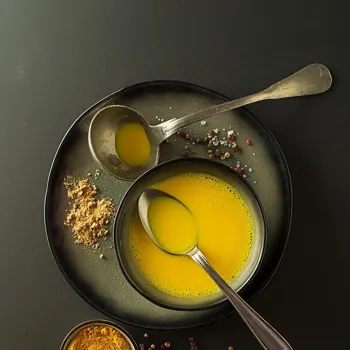
As the spices sizzle and release their aroma, the infused oil is then poured over a dish, adding a burst of flavour and a delightful visual appeal. Tempering is often used as a finishing touch in dals, curries, and vegetables, transforming simple dishes into culinary masterpieces.
Mastering the art of tempering requires careful attention to temperature and timing to prevent the spices from burning. The subtle nuances of its application is key to a dish done right.
Slow-cooking 'bhuna' method enriches Indian curry base flavors
Next, we have 'bhuna', a technique of slow-cooking ingredients over medium heat, stirring frequently, until they release their moisture and develop a rich, concentrated flavour. This process is particularly important for onions, ginger, and garlic, which form the base of many Indian curries.
'Bhuna' not only enhances the flavour of these ingredients but also creates a smooth and velvety texture. It's a patient process that requires continuous monitoring to prevent ingredients from sticking or burning. It is a process that ensures flavours are released at the right intervals.
Roasting food over flame for smoky flavor and charred skin
Thirdly, we have Roasting. This technique is called ‘bhunao’ in some places. It is the process of cooking food uncovered over a direct source of flame. Many vegetables like eggplant or brinjals for bharta are typically roasted over open flame.
This gives the food a smoky flavour along with slight charring of the skin. The food is frequently turned to ensure that it is evenly cooked from all the sides and doesn’t burn from just one side. This is a simple technique that is easy to accomplish.
The flavour of roasted food is very appealing when cooked correctly.
Pressure cooking is a time-saving technique for efficient cooking
Another technique that is often overlooked is pressure cooking. In India, pressure cookers are a kitchen staple, thanks to their ability to cook pulses, vegetables, and meats quickly and efficiently.
The high pressure and steam inside the cooker drastically reduce cooking time while preserving nutrients and intensifying flavours. It's a convenient and time-saving technique, especially for those with busy schedules. Different food items require different pressure duration levels.
Grains may only need 10 mins while dried pulses may need significantly longer. Knowing the right duration comes with practice.
Dum cooking: slow, low-heat method for flavorful dishes
On to the next technique, we have ‘Dum’ cooking. This involves cooking food slowly over low heat, typically in a sealed pot, allowing the ingredients to steam in their own juices.
This method is perfect for biryanis, curries, and other dishes where you want the flavours to meld and create a harmonious blend. The 'dum' process ensures that food is cooked evenly and retains its moisture, resulting in a tender and flavourful dish.
This cooking method is perfect for special occasions and is usually preferred for dishes that require slow cooking.
Deep frying is best for snacks, with risks of uncooked insides
The last one on the list is deep frying. Many traditional snacks like samosas, kachoris are deep fried. Other food items that may usually be cooked using other techniques may also be deep fried. This technique is best suited for snacks or appetizers. It is not usually the main course.
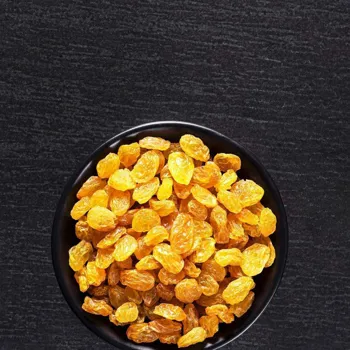
The food item needs to be immersed completely in the oil and cooked till it is crispy brown. The main risk involved in this technique is that the inside of the food item may remain uncooked if the temperature of oil isn’t right or if the piece is too big.
Master Indian cooking with essential techniques, spices, and love
So, there you have it – seven essential cooking techniques that will take your Indian cooking to the next level! So, grab your spices, get your aprons on, and start experimenting. Happy cooking and remember is all about the love.
